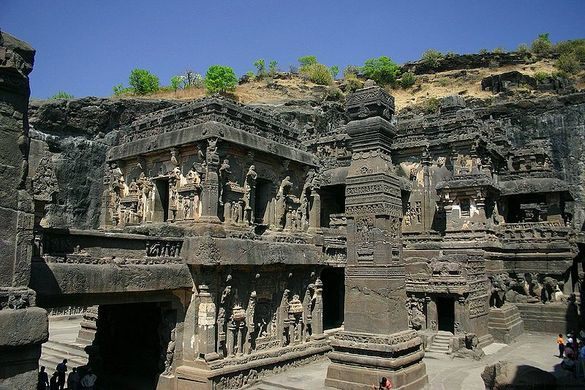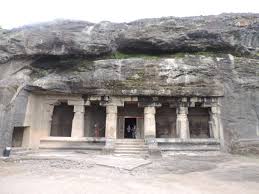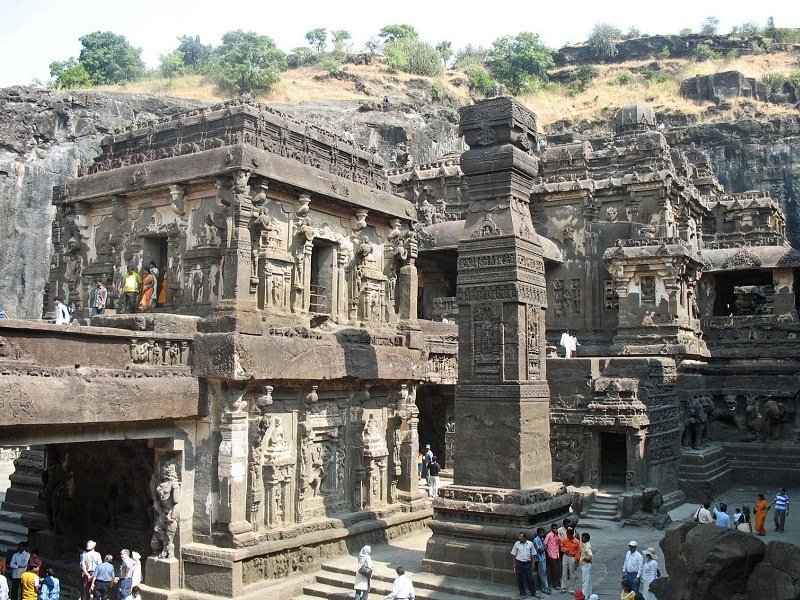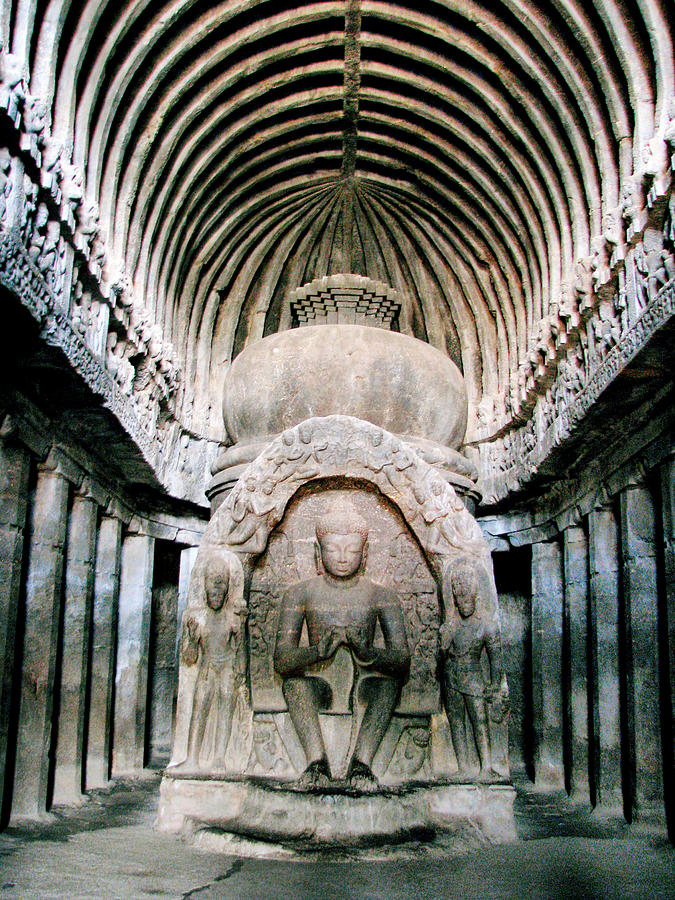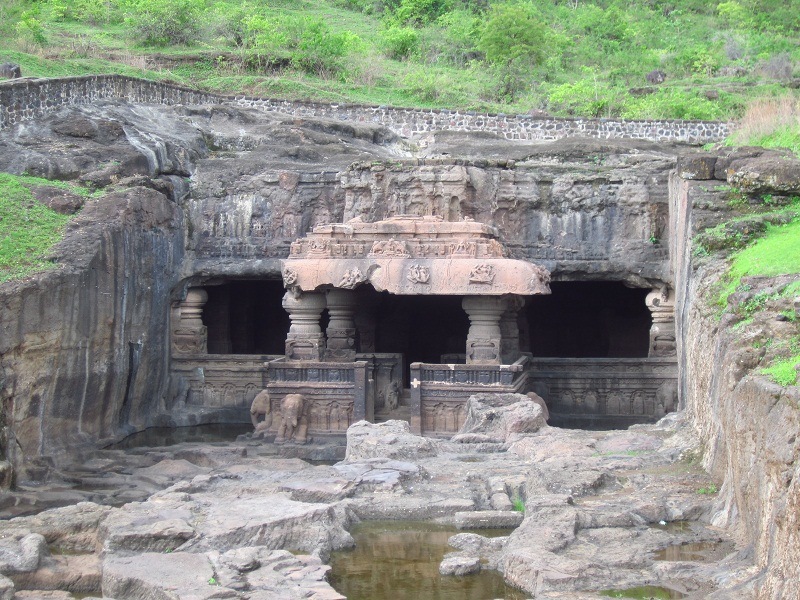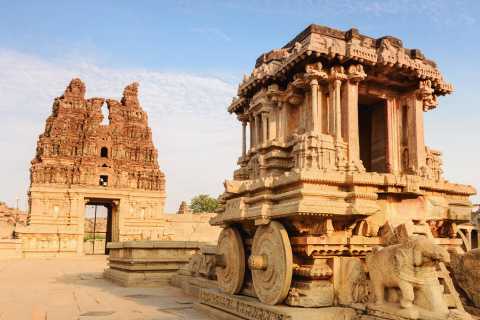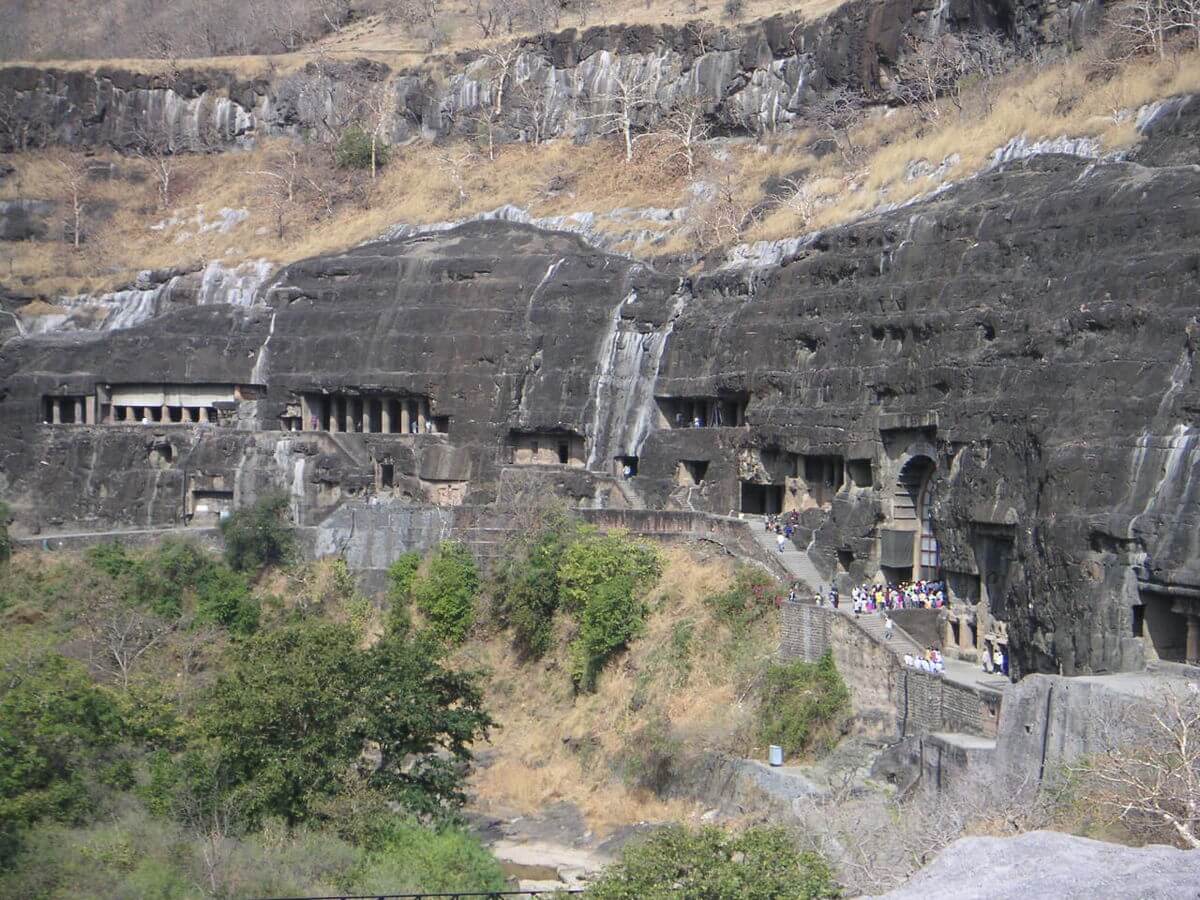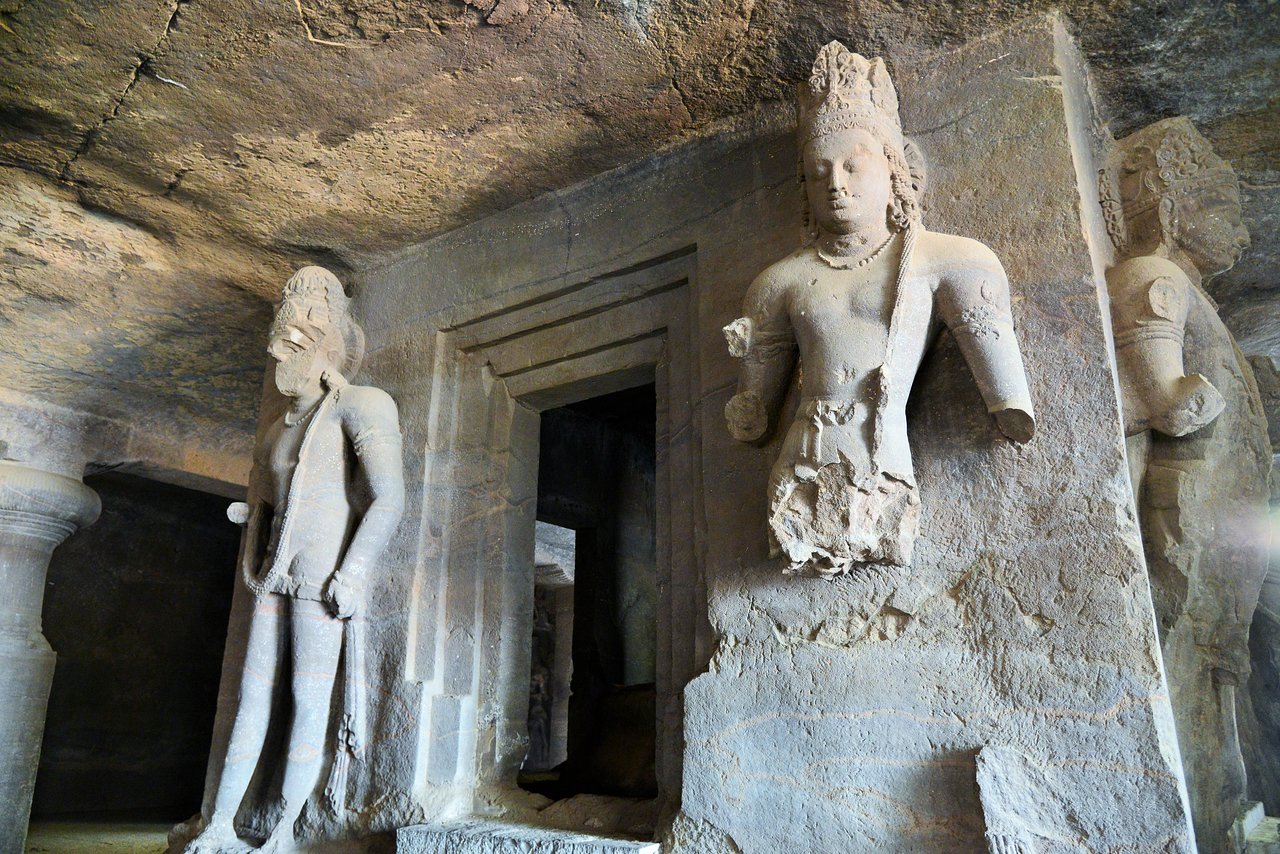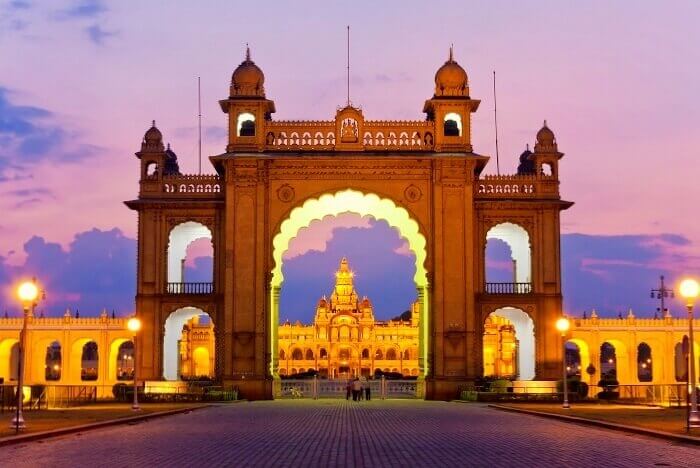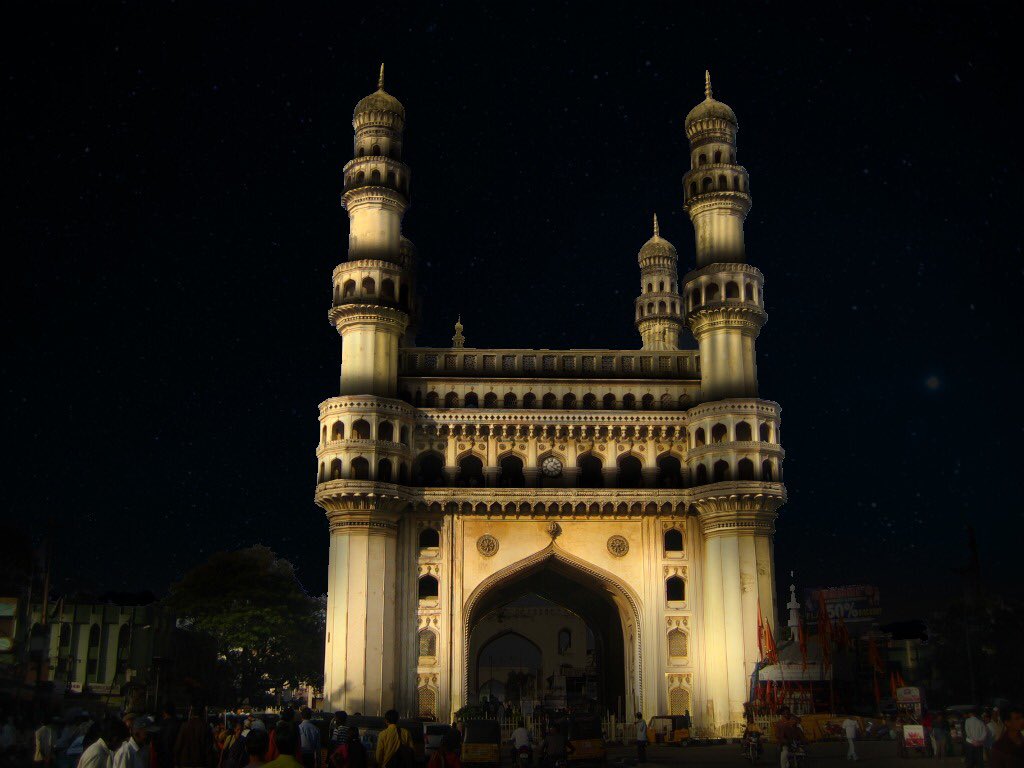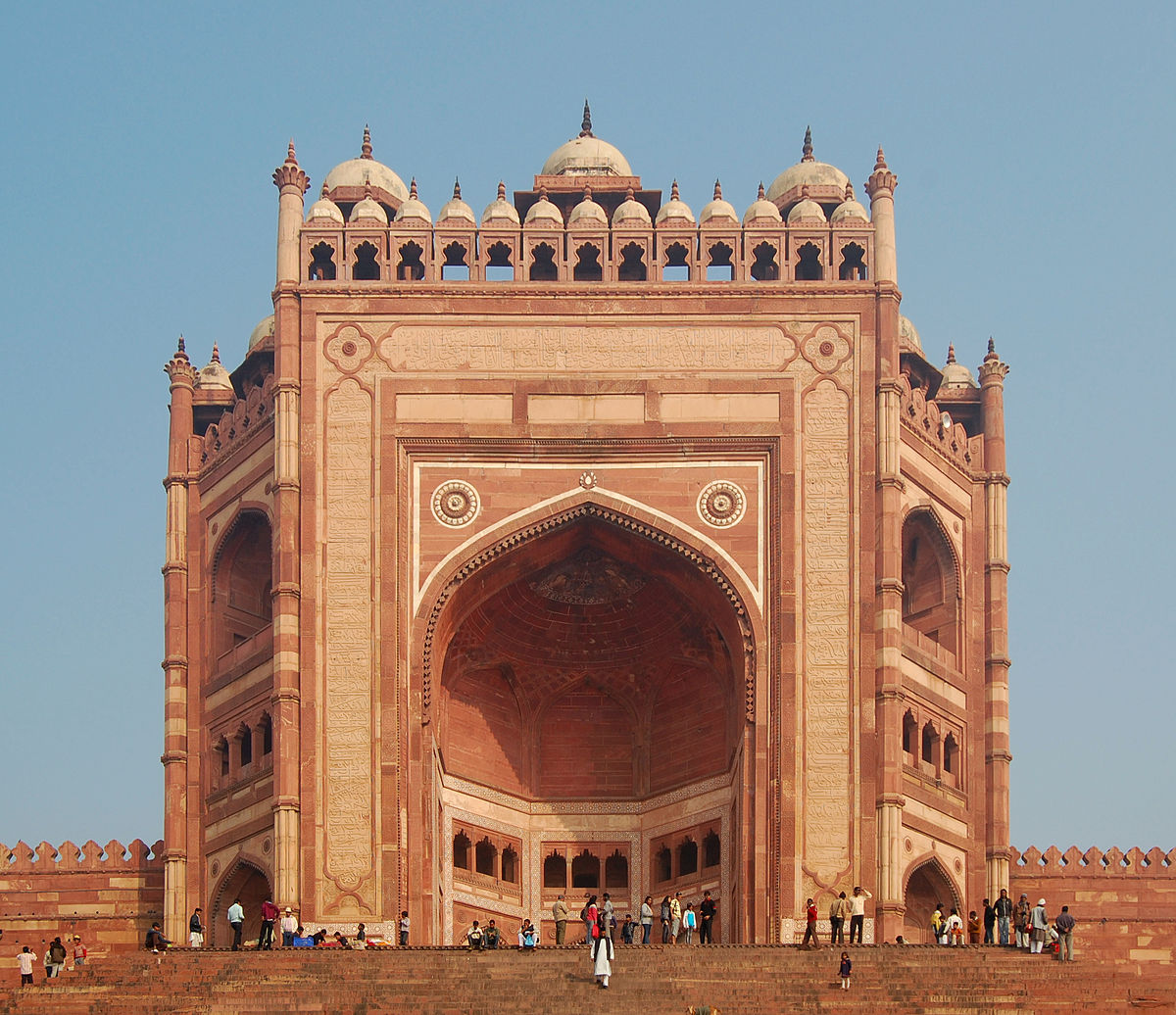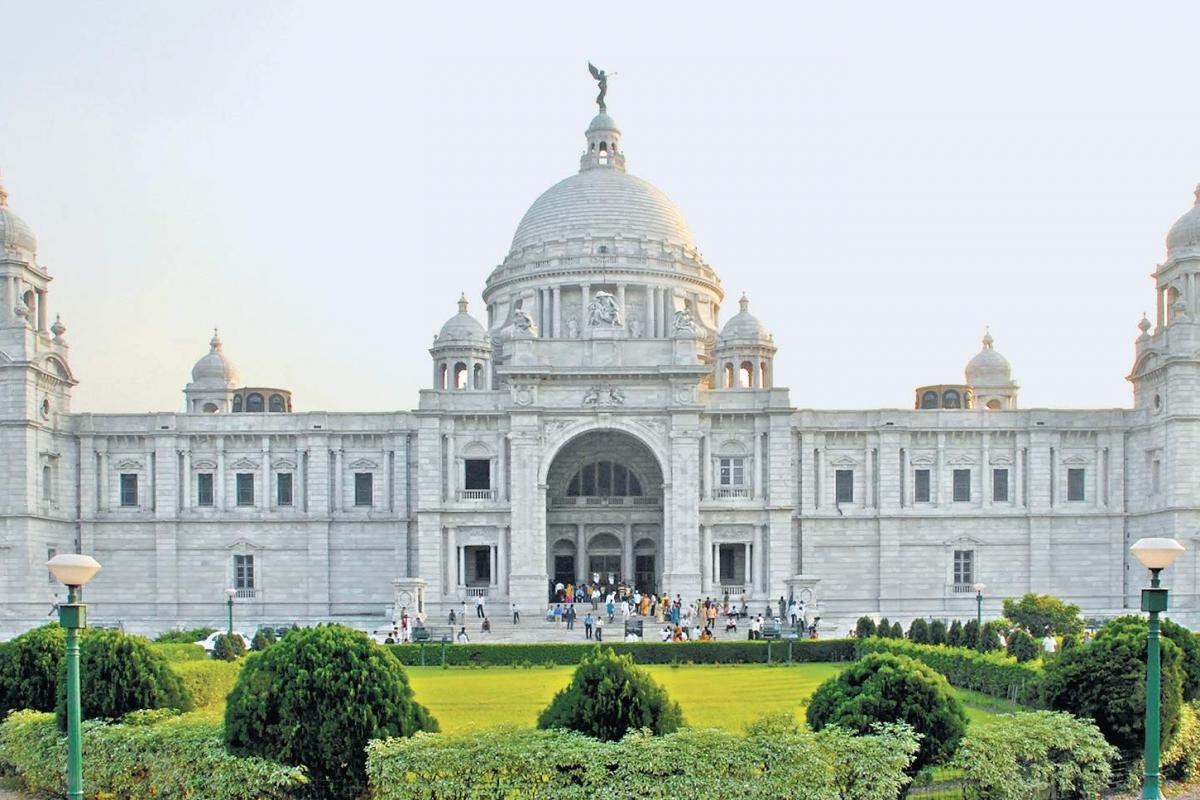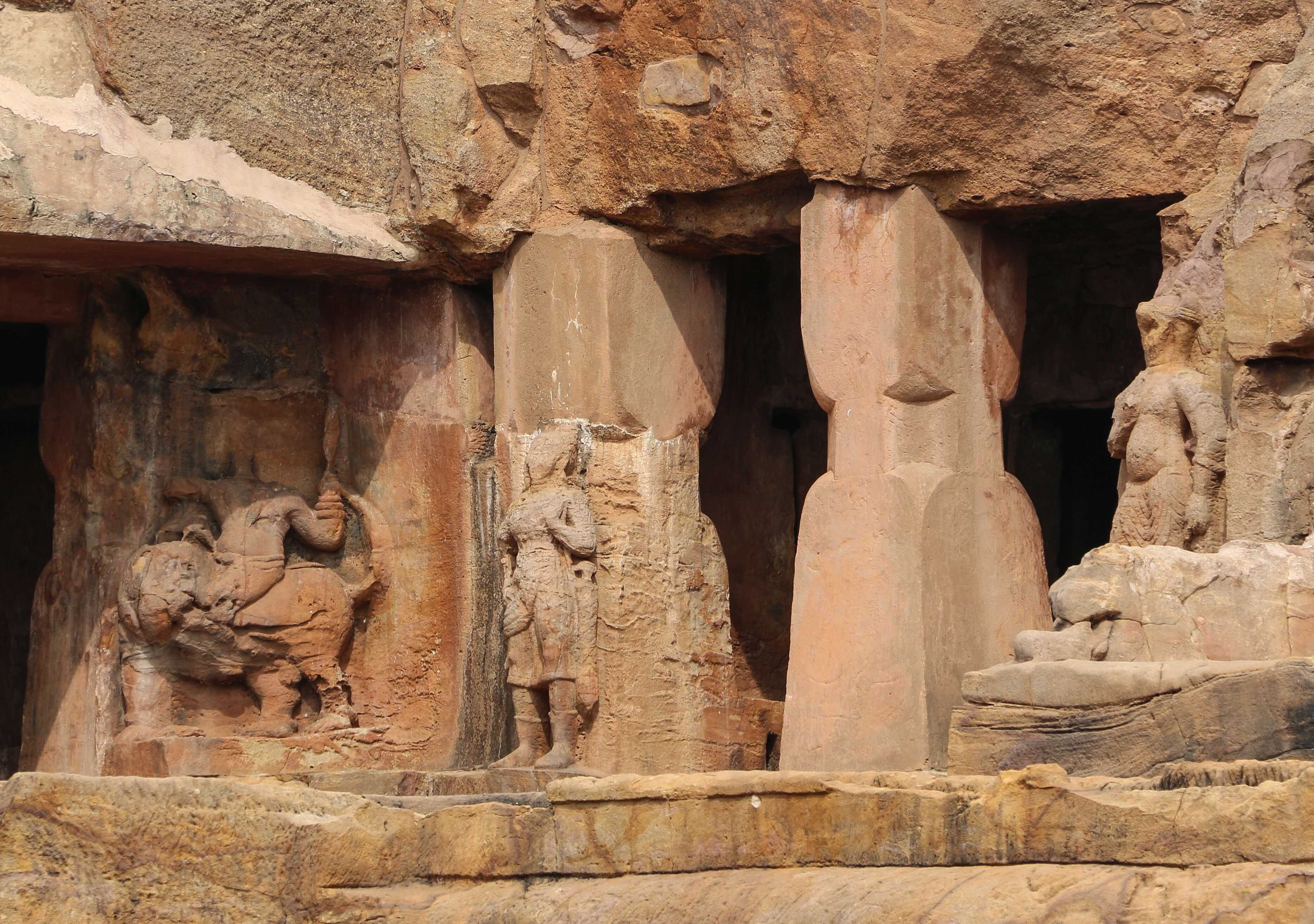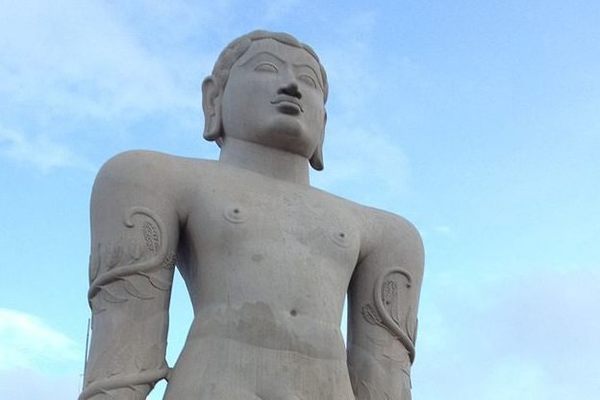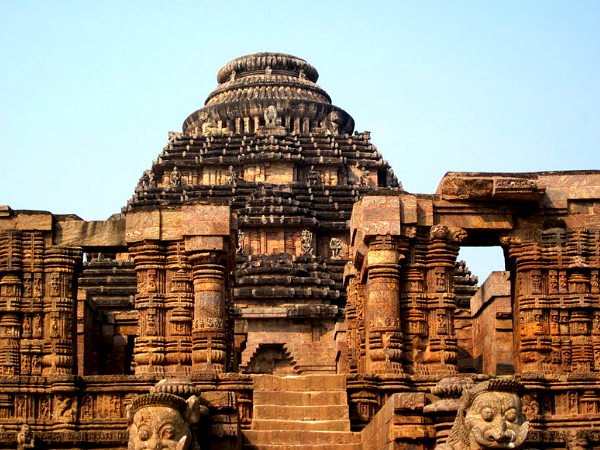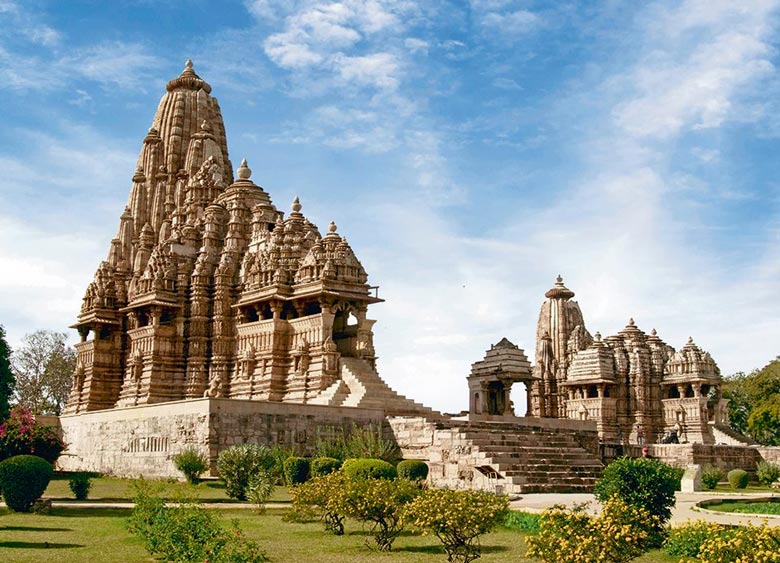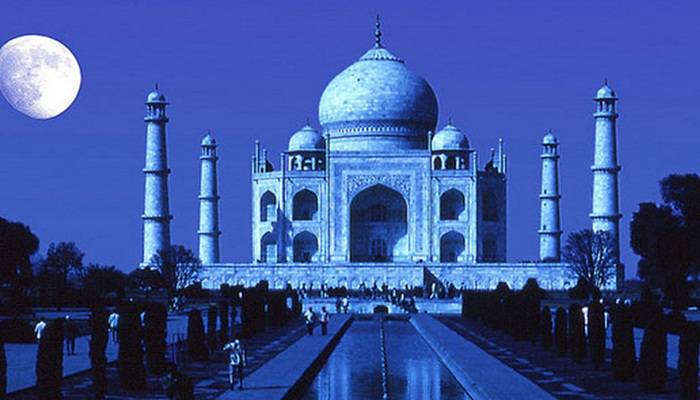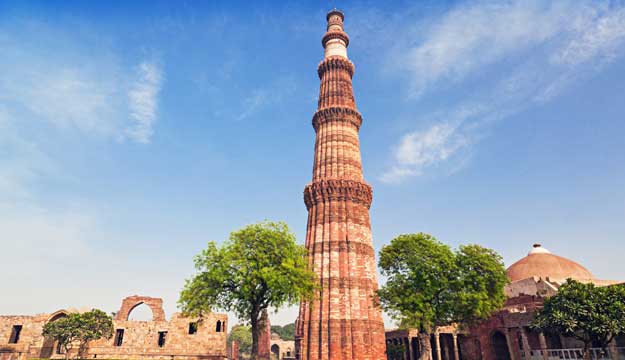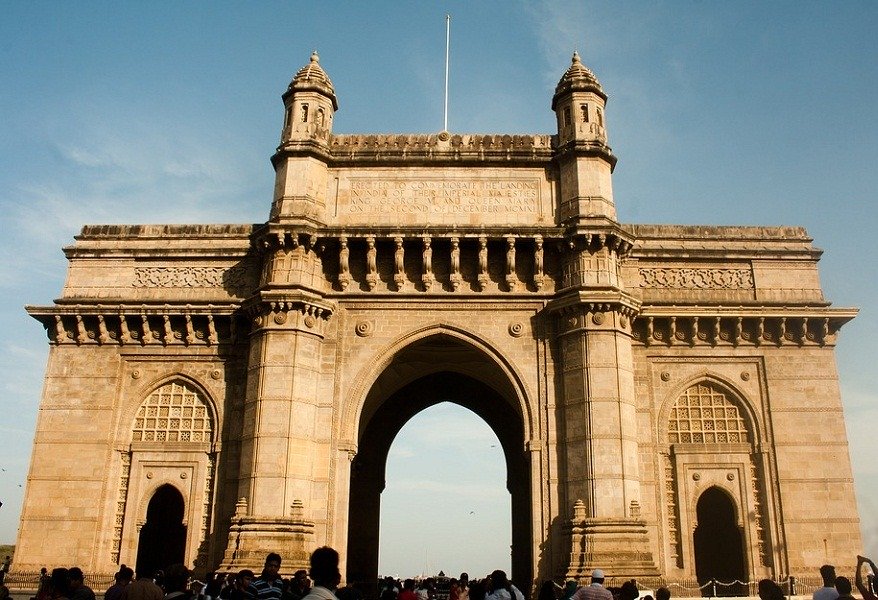- Home
- Monuments of India
- Ellora Caves
Ellora Caves
Ellora Caves:
State: Maharashtra
Country: India
Timings Open from sunrise to sunset except on Tuesdays. It is closed on Tuesdays
Address: Ellora Cave Road, Ellora, Aurangabad, Maharashtra 431005
Ellora caves are located in the Aurangabad district of Maharashtra India. It is a UNESCO world heritage site. Built during 600-1000 CE, Ellora caves stand tall on the Sahyadri Hills in Aurangabad district.It is famous for its Hindu, Jain and Buddhists monuments. Ellora caves served as a resting place for Buddhists and Jain monks and also served as a trade route during the ancient period. The most famous is the Kailasa temple in cave 16 which is in chariot shape and dedicated to lord Shiva. It is one of the important monuments of India.
Most amazing feature of Ellora caves is the hand made rock cut sculptures using just chisel and hammer.
There are around 100 caves but only 34 caves are open to the public which includes 17 Hindu caves, 12 Buddhists caves and five Jain caves. Today both Ajanta and Ellora caves are the most important tourist place in Maharashtra. It is protected under Archaeological survey of India. These 34 monasteries and temples extending over 2 km are a unique artistic creation of ancient India.
Even though the idols are damaged paintings and carvings still remain fresh and neat on it. Rashtrakuta dynasty constructed some of the monuments in Hindu and Buddhists caves and Yadava dynasty constructed a number of Jain caves. Funding for these was provided by the royals, traders and the wealthy traders of that region. It is believed that cave 29 was built by the Kalachuri dynasty.
Hindu monuments-Ellora Caves
Hindu monuments were built in two phases. It was built around the 6th-8th century during the Kalachuri dynasty. Caves 13-29 are of Hindu monuments. Cave 14,15 and 16 were built during the Rashtrakuta period. These largest monolithic caves were completed in the 8th century. Nine temples were excavated during the early 6th century and the remaining four were excavated during the 7th and 8th century. One of the earliest Hindu Rameshvara ( cave 21) dates back to the 6th century. The temples are built in typical Hindu style with a garbha griha and pradakshina path, intricate carvings and extensive decorations of the idols.
Most of the caves were dedicated to Lord Shiva even though one can see carvings of other Hindu gods and goddesses. Cave 21 which is also known as Rameshwar Lena belongs to earlier period. The cave 21 has a number of beautiful carvings of Lord Shiva and Parvati at different styles. The entrance of the cave has carvings of Ganga and Yamuna along with nandi sculpture.
Kailasa Temple- Ellora Caves
Cave 16 is another important Hindu cave which has a beautiful kailasa temple. The cave is completely carved from a single rock. It was built by King Krishna I of Rashtrakuta dynasty to celebrate his victory over Pallavas. However some elements of Pallava architecture can also be noted in this temple. The entrance has a small gopuram. The garbha griha has Linga which is housed inside a flat roofed mandapa that is supported by 16 pillars.
The Kailasa temple was inspired by Mount Kailasha. The temple was built by digging from the sloping basalt hill. Later the temple was curved from the central portion of the rock. The temple consists of three storey vimana along with dhvajastambas. There are also five detached shrines in the temple premises out of which three are dedicated to river Goddess Ganga, Yamuna and Saraswati. Both the Nandi mandapa and the Shiva temple are about 7 metres high and it is built on two storeys. At the base beautiful carvings are made which depict the stories from Ramayana and Mahabharata. Close to the temple there is Indra sabha with gopuram and Jagannatha Sabha both are the Jain temples.
Cave 15 is the Dashavatara cave where the layout plan is similar to Buddhist cave 11 and 12. Cave 15 has an open court with free standing monolithic mandapa and a two storeyed temple at the rear end.
Some of the other important caves include cave 14,cave 22, cave 29 and cave 25.
Buddhists monuments- Ellora Caves
Caves from 1 to 12 are Buddhists monuments. It is believed that these caves were built much earlier than the Hindu monuments but it was proved incorrect with much evidence. The Buddhists monuments were built either between 630-700 CE or 600-700 CE. Cave 6 is considered as the earliest and cave 11 and 12 are last built. Cave 5 is considered to be the most grand and deep cave as compared to others. Cave 5 has a hall, a pair of benches at the centre and statue of Buddha at the back. Out of the 12 Buddhist monuments, 11 caves are viharas with prayer Halls, sleeping quarters, kitchen and other rooms.
These viharas have shrines which have carvings of Gautama Buddha, Bodhisattvas and saints. The carvings in these caves display various poses and many Bodhisattvas. Cave 10 which is a Visvakarma cave is a major prayer Hall. Cave 10 which is also known as carpenters cave because of the rocks resembling wooden beams was built in 650 CE. At the centre of the cave is the 15 ft idol of Buddha is preaching pose with a large Bodhi tree carved at his back. Cave 10 also has idols of both male and female deities like Maitreya, Bhrkuti, Mahamayuri and many more.
Jain Monuments- Ellora Caves
Cave 30 -34 are the five caves which lie to the North of Ellora caves belonging to Digambara sect of Jain monuments. It was excavated between the 9th and 10th century. These caves are much smaller than the Buddhists and Hindu caves. The Jain monuments usually have carvings of Yaksha and Yaksi and also devotees depicting various Jain mythological stories. In Jain caves more importance is given to the depiction of 24 Jinas. The beauty of the Jain temples is the intricate carvings of god and goddess.
Cave 30 is known as Chota Kailash due to its similarity with Kailasa temple in cave 16. It was built in the 9th century and has two big statues of Indra one is eight armed and the other is 12 armed and is in the dancing pose. This cave shows the carving of dancing Indra and not dancing Shiva.
Cave 31 consists of four pillars. This cave has carvings of Parshvantha guarded by Yaksha with seven hoods. Both sides have idols of Gomateshwara. Both Cave 32 and 33 are known as Indra and Jagannath sabha was excavated in the 9th century. Cave 33 is the second largest in Ellora. Cave 32 is a two storey cave with a monolithic shrine in it while cave 33 is also two storey cave with 12 pillars and elephant head projecting towards a porch.
All these are curved from single rock. Some of the major idols in cave 33 include Parshavantha and Mahavira. Cave 32 is beautified with numerous carvings like the lotus flower on the ceiling. The upper level has an image of Ambika seated on a lion under a mango tree. The shrine at the centre has four Tirthankaras Rshibha, Neminatha, Parsvanatha and Mahavira.
How to reach Ellora Caves
Situated almost 27 km from Aurangabad city, Ellora Caves can be reached easily by buses and taxis. There are private taxi stands in Aurangabad which offer a trip to the caves. The Maharashtra State Road Transport Corporation operates bus tours to Ellora Caves. There are also private bus operators.
Nearest Bus Stand to Ellora Caves
Central Bus Stand in Aurangabad is 27 km from the Ellora Caves.
Nearest Railway Station to Ellora Caves
Aurangabad Railway Station is 28 km from the Ellora Caves.
Nearest Airport to Ellora Caves
Aurangabad Airport is 35 km from the Ellora Caves. It connects Mumbai, Delhi and Hyderabad.
Update on coronavirus in India
Affiliate Disclosure:
If you make any purchase via a link on this site, I may receive a small commission with no added cost to you.
